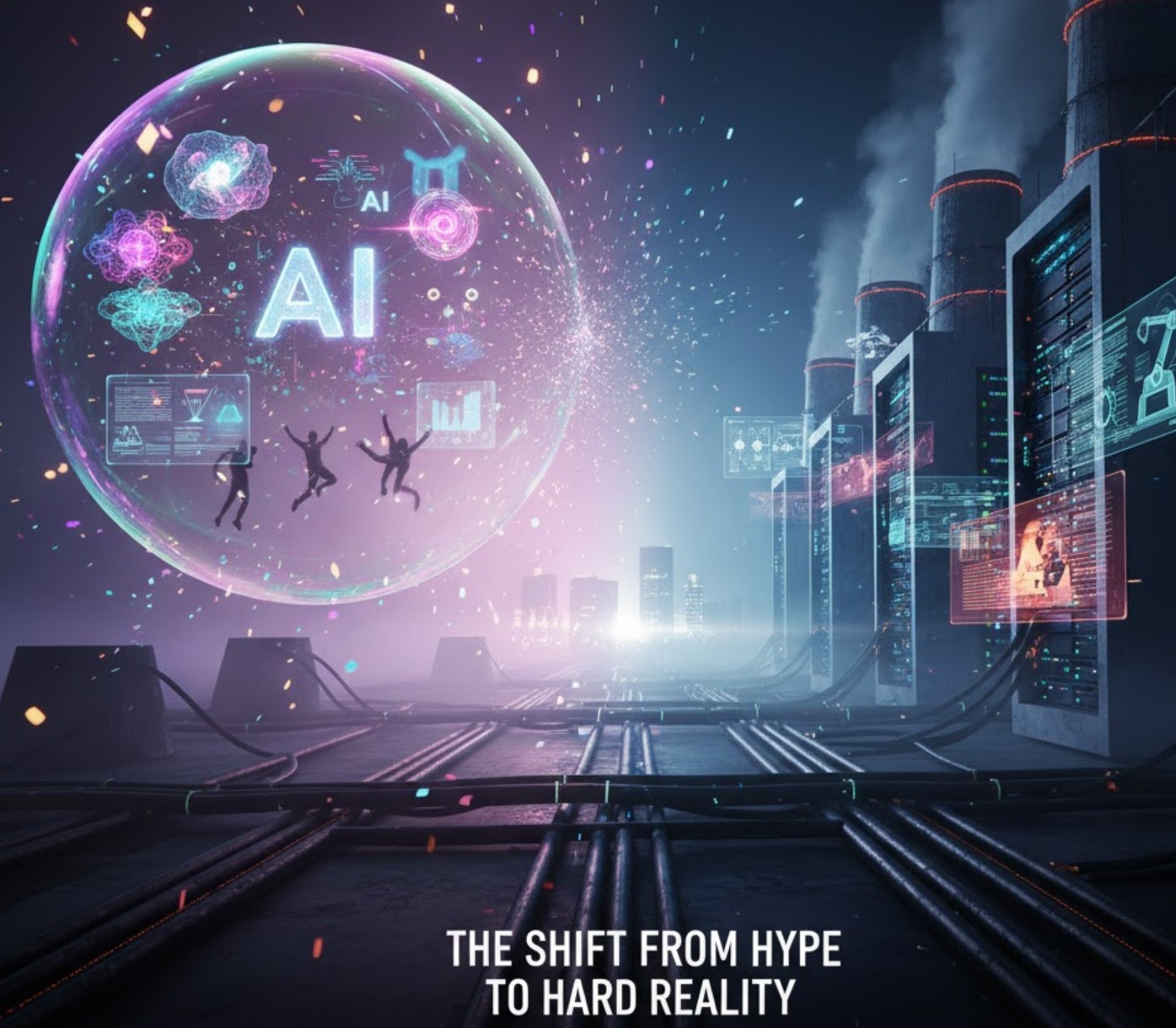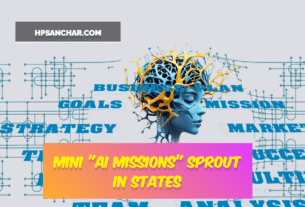The current phase of the AI revolution is a classic example of a technology transitioning from the Peak of Inflated Expectations into the Trough of Disillusionment, a necessary step before reaching the Plateau of Productivity.
1. The Tempering of Consumer Hype
The most noticeable change is the shift in public perception. The initial awe surrounding tools like ChatGPT and Midjourney has been tempered by a dose of reality. This is often misinterpreted as the “boom cooling off.” However, this simply reflects:
- Pilot Purgatory: Many businesses launched initial AI pilots but struggled to integrate them into core, profit-generating workflows due to issues like data quality, legacy system integration, and internal resistance. Studies indicate a significant percentage of AI pilots fail to generate long-term ROI, forcing companies to become more selective.
- The Limits of Novelty: The novelty of generating text or images has worn off. Users and businesses are now demanding tools that demonstrate lasting utility and solve specific, complex problems, rather than simply offering a new trick.
- The “Hallucination” Problem: The acknowledged issues with Generative AI, such as inaccuracy, bias, and high computational costs, have necessitated a more grounded view: AI is powerful, but it requires rigorous governance, not magical thinking.
- The Regulation Effect: Governments worldwide are moving from discussion to action. Regulations like the EU AI Act and national executive orders are introducing compliance costs and legal uncertainty, slowing the “move fast and break things” mentality and forcing a more deliberate, safety-conscious development pace.
2. The Unrelenting Infrastructure and Investment Boom
Contrary to a cooling market, financial data reveals a spectacular acceleration in the strategic foundation of AI: infrastructure and enterprise application. The nature of the investment has changed, not its magnitude.
The core of this investment is an Infrastructure Arms Race. The massive, power-hungry data centers required to train and run frontier models are now considered critical national infrastructure. This is not the speculative frenzy of a bubble, but the heavy-industry investment required to build the foundational computing utility of the next economic era.
The Shift in Technological Focus: From Generalists to Specialists
The technology itself is moving past the phase of general-purpose large language models (LLMs) towards specialized, high-value applications.
Vertical AI and Agentic Systems
The biggest value is now being created by Vertical AI—industry-specific solutions rather than one-size-fits-all models. Companies are moving from merely using an LLM to integrating agentic AI—systems designed to perceive, decide, and act autonomously to achieve specific goals.
- Legal & Finance: AI agents for due diligence, contract analysis, and fraud detection.
- Healthcare: Generative AI for summarizing electronic health records (EHRs) and synthetic trial simulation for faster drug discovery.
- Manufacturing: Robotics + AI for delicate tasks and digital twins with AI simulation to optimize factory flows.
This shift represents a maturation from a tool (a simple chatbot) to a partner (an autonomous agent that redesigns business processes). The focus is no longer just on creating a model, but on ModelOps (Model Operationalization)—the engineering discipline required to consistently and securely manage AI systems in the enterprise.
The Defining Challenges of True Maturity
The path from disillusionment to productivity is paved with significant challenges that must be overcome for the AI revolution to be sustainable:
- Talent and Literacy Gap: The shortage of qualified AI professionals and the broader need to instill “AI Literacy” across the workforce remains a critical bottleneck.
- Data Readiness: AI is limited by the quality of its training data. A majority of organizations estimate their data is not AI-ready, lacking the necessary governance, quality, and structure for reliable, enterprise-grade AI deployment.
- Energy and Sustainability: The sheer electricity consumption of new AI data centers is straining national power grids and raising serious environmental concerns. Affordable, reliable, and sustainable power is now a non-negotiable determinant of future AI development.
- Geopolitical Competition: The global AI race is intensifying, with nations treating national compute infrastructure as a critical strategic asset. The emergence of highly efficient and cost-effective frontier models from non-Western companies, such as those from China, is challenging the market dominance of U.S. incumbents and increasing pressure on pricing and efficiency.
Conclusion: The Endurance Test of Transformation
The “cooling off” narrative is a superficial reading of a necessary transition. The white-hot, media-driven frenzy of the initial AI explosion has indeed settled, but it has been replaced by the enduring, structural heat of deep transformation.
The AI boom is not collapsing; it is shedding its speculative froth and hardening into an Adoption Cycle. Investors are more selective, enterprises are more focused on tangible ROI, and the technology is being forced to solve harder, deeper, and more critical problems. The revolution is shifting from a demonstration of what AI can do to the arduous, but infinitely more valuable, work of how we can integrate it to fundamentally rewire the global economy. The AI age is not over; it is just beginning its most crucial, infrastructure-heavy, and ultimately transformative phase.



